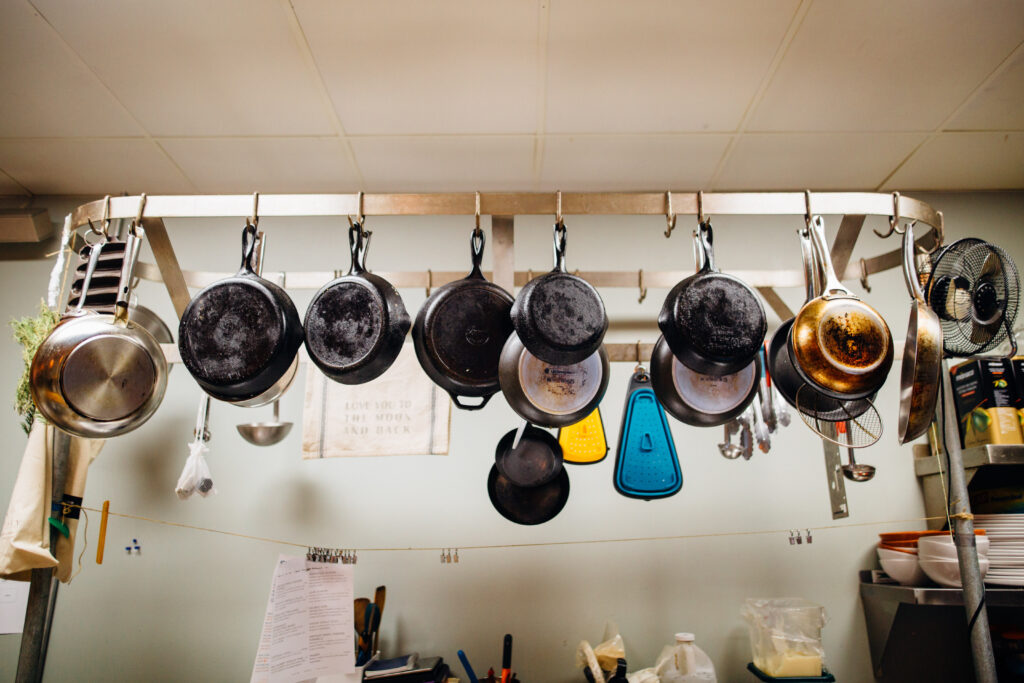In this article, you will find all the information you need to properly care for your Calphalon cookware. From understanding the different materials used to make Calphalon pots and pans, to learning how to clean and maintain them, this article provides a comprehensive guide to ensure the longevity and performance of your cookware. Discover whether Calphalon cookware is safe to use, how to prevent food from sticking to the pans, and how to remove stains or restore non-stick properties. Additionally, learn about the various Calphalon product lines, such as Signature and Contemporary, and find out the recommended oven temperatures, store safely, and more. Whether you are a beginner or an experienced chef, this article will equip you with the necessary knowledge to properly care for your Calphalon cookware.
What is Calphalon cookware?
Calphalon cookware is a popular brand of high-quality kitchen cookware that offers a range of pots, pans, and other cooking utensils. Known for their durability and excellent performance, Calphalon products are favored by both professional chefs and home cooks alike. Whether you’re a novice in the kitchen or a seasoned chef, Calphalon cookware can elevate your cooking experience and help you achieve delicious results.
Definition of Calphalon cookware
Calphalon cookware refers to the line of kitchen pots, pans, and other cooking items produced by the Calphalon Corporation. This brand is known for their use of high-quality materials and innovative designs that enhance cooking performance and durability. The name “Calphalon” is a blend of the words “calibrated” and “aluminum,” reflecting Calphalon’s commitment to precise cooking and their initial focus on the use of aluminum in their products.
Brief history of Calphalon cookware
Calphalon cookware has a rich history that dates back to the early 1960s. The company was founded by Ronald Kasperzak and Louis J. Ross, who were metallurgists at the time. They developed a unique aluminum cookware concept that involved an anodizing process, which resulted in a hard, smooth, and non-reactive surface. This breakthrough led to the creation of the first commercial hard-anodized aluminum cookware, which became the foundation for the Calphalon brand. Over the years, the company expanded its product line to include stainless steel, non-stick, and other cookware materials, cementing Calphalon’s reputation as a leading cookware brand.
Is Calphalon cookware safe to use?
When it comes to the safety of your cookware, it’s essential to choose a brand that meets rigorous safety standards and employs manufacturing practices that prioritize consumer well-being. In the case of Calphalon cookware, you can rest assured knowing that the brand takes safety seriously.
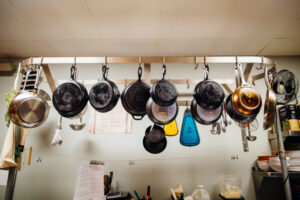
This image is property of images.pexels.com.
Safety standards of Calphalon cookware
Calphalon cookware is designed and manufactured in compliance with industry safety standards. The company follows stringent guidelines to ensure that their products are safe to use and do not pose any health risks to consumers. Calphalon conducts extensive testing and quality control measures to maintain the highest standards of safety in their cookware.
Potential health concerns of Calphalon cookware
While Calphalon cookware is generally considered safe, there have been some concerns raised about the potential health risks associated with certain materials used in their products. For example, non-stick coatings, such as Teflon, have been linked to the release of potentially harmful chemicals when exposed to high heat. However, Calphalon utilizes a proprietary non-stick coating called “PFOA-free” that eliminates the risk of exposure to these chemicals. It is important to note that proper usage and care of Calphalon cookware can minimize any potential health concerns.
How is Calphalon different from other cookware brands?
With numerous cookware brands available on the market, it can be overwhelming to choose the right one for your kitchen. However, Calphalon stands out from the competition in several ways, making it a preferred choice for many cooking enthusiasts.
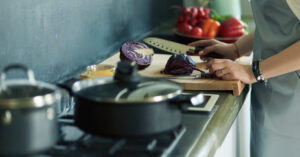
This image is property of images.pexels.com.
Unique features of Calphalon cookware
Calphalon cookware sets itself apart through its unique features that enhance both cooking performance and convenience. One notable feature is the brand’s use of hard-anodized aluminum, which provides excellent heat distribution and durability. Additionally, Calphalon offers various lines of cookware, each with its own distinct qualities. For instance, some collections feature a triple-layer non-stick coating for easy food release, while others have a brushed stainless steel exterior for a modern and stylish look.
Comparison to other popular cookware brands
When compared to other popular cookware brands, Calphalon often comes out on top due to its reputation for exceptional quality and performance. While other brands may offer similar features or materials, Calphalon’s commitment to innovation and attention to detail set it apart. When making a decision about which cookware brand to choose, it’s important to consider factors such as customer reviews, brand reputation, and the specific features that are most important to you.
What materials are Calphalon pots and pans made from?
The materials used in the construction of your cookware play a crucial role in its performance and longevity. Calphalon offers a range of products made from different materials, each with its own unique benefits and drawbacks.

This image is property of images.pexels.com.
Overview of the materials used in Calphalon cookware
- Hard-Anodized Aluminum: Calphalon’s signature material, hard-anodized aluminum, is known for its exceptional heat conductivity and durability. This material undergoes a special anodizing process that enhances its resistance to scratches and corrosion.
- Stainless Steel: Calphalon also offers cookware made from stainless steel, which is prized for its strength, resistance to staining, and non-reactive properties. Stainless steel pans are versatile and can be used for a wide range of cooking techniques.
- Non-Stick Coating: Many Calphalon products feature a non-stick coating that allows for easy food release and effortless cleaning. The non-stick surface is typically made from a material such as PTFE (polytetrafluoroethylene) or ceramic, which prevents food from sticking to the pan during cooking.
Benefits and drawbacks of each material
- Hard-Anodized Aluminum: The use of hard-anodized aluminum in Calphalon cookware provides excellent heat distribution, ensuring even cooking results. This material is also highly durable, scratch-resistant, and easy to clean. However, it is important to note that hard-anodized aluminum is not non-stick by nature and may require the use of oil or butter during cooking.
- Stainless Steel: Calphalon’s stainless steel cookware offers superior durability and a sleek, polished appearance. Stainless steel pans are oven-safe and can withstand high temperatures, making them ideal for various cooking methods, including searing and browning. However, stainless steel pans may require the use of oils or cooking sprays to prevent food from sticking.
- Non-Stick Coating: Calphalon’s non-stick cookware features a coating that allows for easy food release and requires minimal oil or butter during cooking. This makes it a healthier option for those watching their fat intake. However, non-stick coatings can wear off over time and are not suitable for use with metal utensils. It is important to follow the manufacturer’s instructions for proper care and maintenance to extend the lifespan of the non-stick coating.
Is Calphalon non-stick?
Calphalon offers a range of non-stick cookware products that feature a specially designed coating to prevent food from sticking during cooking. This non-stick coating is applied to the interior of the pots and pans, allowing for easy food release and effortless cleanup.
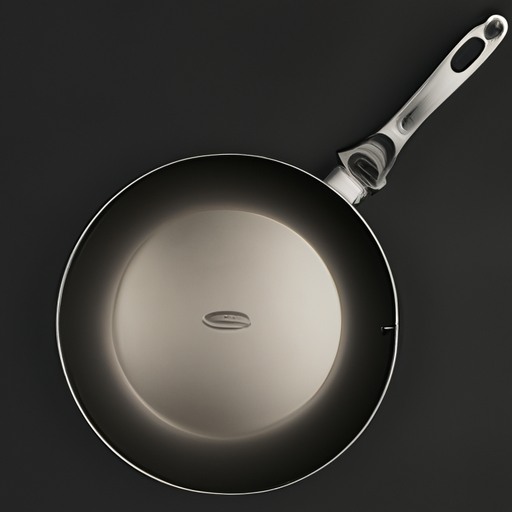
Explanation of Calphalon’s non-stick coating
Calphalon utilizes a proprietary non-stick coating that is designed to provide exceptional performance and durability. This coating is typically made from materials such as PTFE (polytetrafluoroethylene) or ceramic, which create a smooth surface that prevents food from adhering to the pan. The non-stick coating allows for healthier cooking by reducing the need for excess oils or fats.
Advantages and disadvantages of non-stick cookware
Non-stick cookware offers several advantages that make it a popular choice among home cooks. Some of the benefits of using non-stick cookware, such as Calphalon’s non-stick pans, include:
- Easy food release: The non-stick coating prevents food from sticking to the pan, making it easier to flip, stir, or remove food without any residue.
- Effortless cleaning: Non-stick surfaces are much easier to clean than traditional cookware. Food and sauces are less likely to stick, which means you can simply wipe the pan clean or wash it with mild soap and water.
- Healthier cooking: Non-stick cookware reduces the need for excessive oil or butter during cooking, making it a healthier option for those looking to cut down on added fats.
However, it’s important to note that non-stick coatings can wear off over time, especially with regular use and improper care. Scratching the surface with metal utensils or using harsh cleaning agents can damage the coating and reduce its effectiveness. Additionally, non-stick cookware may not achieve the same browning or searing results as other materials, such as stainless steel or cast iron.
How do I clean Calphalon non-stick cookware?
Proper cleaning and maintenance are essential for prolonging the lifespan of your Calphalon non-stick cookware and ensuring its continued performance. Follow these step-by-step instructions to clean your non-stick pans effectively:
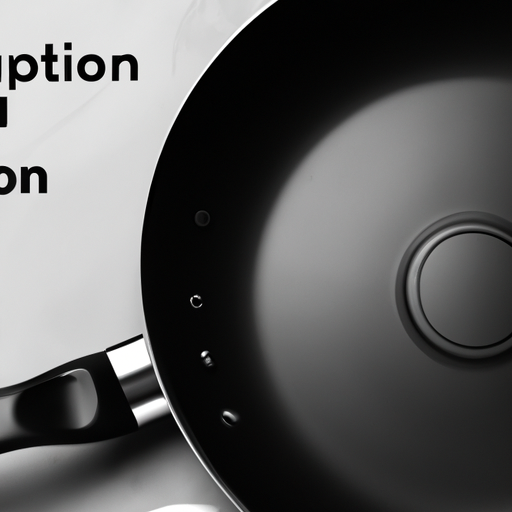
Step-by-step instructions for cleaning Calphalon non-stick cookware
- Allow the pan to cool down: After cooking, remove the pan from the heat source and let it cool completely before cleaning.
- Wash with warm, soapy water: Use a mild dish soap and warm water to clean the pan. Gently scrub the interior with a soft sponge or cloth to remove any food residue.
- Avoid abrasive cleaners: Do not use abrasive cleansers, scouring pads, or metal scrubbers, as they can scratch and damage the non-stick coating.
- Rinse thoroughly: After washing, rinse the pan with warm water to remove any soap residue.
- Dry completely: Ensure that the pan is completely dry before storing it to prevent the growth of bacteria. Use a soft cloth or paper towel to dry the pan, or leave it to air dry.
Recommended cleaning products and tools
To maintain the quality of your Calphalon non-stick cookware, it is recommended to use gentle cleaning products and tools. Here are some recommended options:
- Mild dish soap: Choose a gentle dish soap that is free of harsh chemicals and fragrances. Avoid using dishwasher detergent, as it can be too harsh for non-stick coatings.
- Soft sponge or cloth: Use a non-abrasive sponge or cloth to clean the interior of the pan. Avoid scrubbing too vigorously, as this can damage the non-stick coating.
- Nylon or silicone utensils: When cooking with non-stick pans, use utensils made of nylon, silicone, or other non-metal materials. Metal utensils can scratch and damage the non-stick coating.
By following these cleaning instructions and using appropriate cleaning tools, you can keep your Calphalon non-stick cookware in excellent condition for years to come.
Can I use metal utensils with Calphalon non-stick cookware?
While Calphalon non-stick cookware provides a convenient and easy-to-clean cooking surface, it is important to use the proper utensils to prevent damage to the non-stick coating. Metal utensils, such as forks, knives, or spatulas, can scratch and scrape the non-stick surface, significantly reducing its lifespan and performance.
Guidelines for using utensils with non-stick pans
To ensure the longevity of your Calphalon non-stick cookware, it is recommended to follow these guidelines:
- Use non-metal utensils: When using non-stick pans, opt for utensils made from silicone, nylon, wood, or other non-metal materials. These utensils are less likely to scratch or damage the non-stick coating.
- Avoid sharp or pointed utensils: Sharp or pointed utensils can pierce the non-stick coating, causing it to peel or chip. Instead, choose utensils with rounded edges that are gentle on the surface of the pan.
- Lift and stir gently: When cooking, avoid applying excessive force or pressure to the non-stick surface. Gentle lifting and stirring motions will help protect the coating from scratches.
Impact of metal utensils on non-stick coating
Using metal utensils on non-stick pans, including Calphalon non-stick cookware, can cause damage to the non-stick coating. When the coating is scratched or chipped, it becomes less effective at preventing food from sticking, and it may also release potentially harmful particles into your food. To maintain the integrity of your non-stick pans, it is best to stick to non-metal utensils.
Are Calphalon pans oven-safe?
The oven is a versatile tool in the kitchen, allowing you to prepare a wide range of dishes. If you enjoy finishing your meals in the oven or simply need to keep food warm, it’s essential to know whether your cookware is oven-safe. In the case of Calphalon pans, the answer depends on the specific product and its materials.
Temperature limitations for using Calphalon pans in the oven
Calphalon offers a variety of pans that are oven-safe, but the temperature limitations may vary depending on the type of pan and its construction. It is crucial to consult the manufacturer’s guidelines for your specific Calphalon pan to determine its maximum oven-safe temperature.
In general, Calphalon pans made from hard-anodized aluminum are oven-safe up to a certain temperature, usually around 500°F (260°C). Stainless steel pans are also oven-safe, and they can withstand higher temperatures, typically up to 600°F (315°C) or more.
Always refer to the documentation provided with your Calphalon cookware or check the product page on the Calphalon website for specific oven-temperature limitations.
Precautions for baking with Calphalon cookware
When using Calphalon pans in the oven, it is important to take precautions to ensure safe and effective cooking:
- Use oven mitts or pot holders: Calphalon pans can become extremely hot when exposed to high temperatures, so always use oven mitts or pot holders to protect your hands when handling hot pans.
- Avoid sudden temperature changes: Calphalon pans are designed to handle oven heat, but extreme temperature changes can cause warping or damage. To avoid this, never transfer a hot pan from the oven directly to a cold surface, such as a countertop or sink.
- Use the appropriate pan size: It is essential to select a pan that fits comfortably in your oven without overcrowding or touching the oven walls. Proper air circulation is necessary for even cooking.
By following these precautions and using your Calphalon pans within their recommended temperature limits, you can safely use them in the oven and achieve delicious results.
What is the recommended oven temperature for Calphalon cookware?
Calphalon offers a diverse range of cookware, each with its own recommended oven temperature limits. These temperature limits are designed to ensure the longevity and performance of your Calphalon pans.
Ideal oven temperatures for different types of Calphalon cookware
- Hard-Anodized Aluminum: Calphalon pans made from hard-anodized aluminum are typically oven-safe up to temperatures of 500°F (260°C). This material is known for its excellent heat conductivity and durability, making it suitable for a wide range of cooking techniques.
- Stainless Steel: Calphalon pans made from stainless steel are also oven-safe; however, they can typically withstand higher temperatures than their hard-anodized aluminum counterparts. Stainless steel pans are generally safe to use in the oven at temperatures up to 600°F (315°C) or higher.
To determine the specific oven temperature limits for your Calphalon pans, refer to the manufacturer’s guidelines or the product packaging.
Effects of high temperatures on Calphalon
While Calphalon pans are designed to withstand high temperatures, it is important to note that exposure to extreme heat can potentially cause damage over time. Prolonged exposure to high temperatures can result in warping, discoloration, or performance issues in your Calphalon cookware. To ensure the longevity of your pans, it is best to stay within the recommended temperature ranges outlined by the manufacturer.
By following the recommended oven temperature limits and proper usage guidelines, you can make the most of your Calphalon cookware and enjoy delicious meals.
Can I use Calphalon cookware on a smooth-top electric range?
Smooth-top electric ranges, also known as glass or ceramic cooktops, have become increasingly popular due to their sleek appearance and ease of cleaning. If you have a smooth-top electric range and are considering using Calphalon cookware on it, there are some factors to consider.
Compatibility of Calphalon cookware with smooth-top electric ranges
Calphalon cookware is generally safe to use on smooth-top electric ranges. The smooth, flat surface of these ranges allows for even heat distribution, which is beneficial for cookware like Calphalon’s hard-anodized aluminum or stainless steel pans. Additionally, the weight and construction of Calphalon cookware make it suitable for use on these types of cooktops.
However, it is essential to note that using excessive heat or dragging heavy pots or pans on the smooth surface can potentially scratch or damage both the cookware and the cooktop. To avoid such issues, it is important to exercise caution and follow the manufacturer’s guidelines.
Precautions for smooth-top electric range use
When using Calphalon cookware on a smooth-top electric range, keep the following precautions in mind:
- Lift instead of slide: Rather than sliding your Calphalon pans on the smooth cooktop, lift them to prevent scratching or damaging the surface.
- Adjust heat gradually: Smooth-top electric ranges respond quickly to changes in heat settings, so start with low or medium heat and gradually increase if needed. Avoid using high heat levels, as they can cause the pans to overheat and potentially damage the cookware or the cooktop.
- Use appropriate pan sizes: Ensure that the size of your Calphalon pans matches the size of the heating element on the smooth-top electric range. Oversized or undersized pans can cause uneven heating and may not be as efficient.
By taking these precautions and following the manufacturer’s guidelines, you can safely use your Calphalon cookware on a smooth-top electric range and enjoy delicious meals with ease.

